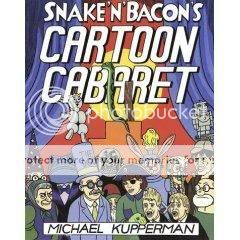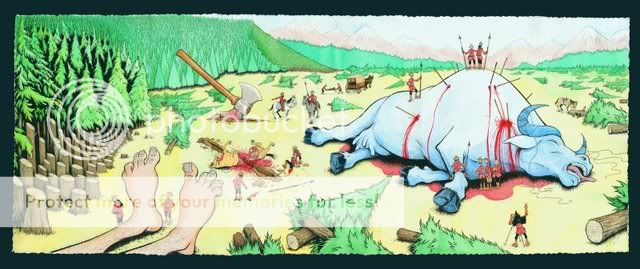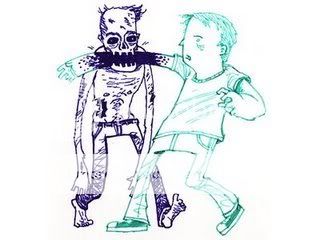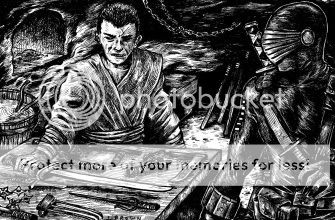I FORGOT TO ADD THE SPOILER WARNING LAST WEEK, BUT I REMEMBERED THIS WEEK
I thought that was a strong episode, a very strong episode in fact. I didn’t see the flashbacks coming at all, and it was a very smart idea, tying these characters back to all they’d lost. Not that they were all note-perfect, mind you–again, we’ve gone to the bottomless grief reservoir quite a few times so seeing Roslin fall apart in a public fountain lacked the impact it might have otherwise; Anders’s ode to physics seemed a bit on the nose, even if it is the kind of thing I can picture a smart jock saying in an interview with a female reporter while reclining naked in a tub. But seeing Roslin with family, and seeing Zack Adama again, and especially seeing Baltar with his father and all the levels of discomfort and embarrassment that that meeting exposed in Gaius and Julius and Six…wonderful stuff.
Speaking of Gaius, his long, weirdly underdeveloped religious-cult storyline finally felt like it had a point, which was that Gaius was spending that time falling bass-ackwards into power once again. He kept it up because it got him laid, it got him attention, he’s good at it, it was some kind of emotional outlet, and Head Six wanted him to, but in the end it was all leading to this pivotal juncture where he ends up basically the most powerful person in the fleet as everyone else goes off on the rescue mission. Callis, who over the years became one of the show’s great pleasures, played the entire episode with a look of “what the fuck, man?” in his eyes. I’m a little concerned that without an antagonist still in the fleet his storyline might feel flat, but we’ll see.
Which leads us to what will apparently be the series finale’s big leap of faith, which is that the Admiral and President and stand-in President of the fleet would allow however many hundreds of key military and political personnel to take however many military assets they need and fly off on a suicide mission into Cylon Central in the middle of an asteroid field right next to a black hole. On a narrative level, this is Gandalf’s gambit at the end of The Lord of the Rings, where he, and all the surviving members of the Fellowship who could give the game away if captured and tortured, and the King of Gondor and the King of Rohan and most of the leadership class, strolled up to the Black Gates to be slaughtered because they believed that something very important and transcendent required them to do so. The thing is, that’s a lot easier for the characters and the audience alike to swallow in a fantasy narrative than it is in a science fiction allegory where people drive cars and smoke cigarettes and pretty much behave like normal people except for a few fantastic elements. What the story is asking us to do is believe that at this point, the fantastic elements in these characters’ lives are, perhaps, all they have left to cling to, that all these hundreds of people are going to risk it all because to not do so will just mean floating around aimlessly in space for a few more decades until they die out. If Hera means something, they mean something, so they’re going for broke. It’s a gamble on the show’s part, and if I were coming to it cold I don’t know if I’d buy it, but the show has earned a lot of goodwill from me by being one of the highlights of my life for a few years now, so gods-speed, gang.













